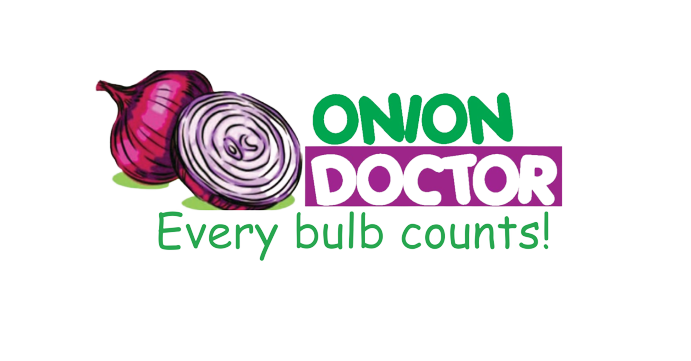Maximizing Onion Farming Profits in Kenya: A Comprehensive Guide

Are you in need of in-depth knowledge on onion and garlic production? If yes, we are a call away. Our service chatter includes: Onion seedlings, Garlic seedlings, Farm planning services, Soil testing, Drip irrigation installation and maintenance, Agronomic support, Onion and Garlic value pack and Farm management. For free consultation, placing orders or booking a visit with an agronomist, please contact us via Call or what’s app +254703982228, Email: Info@oniondoctor.co.ke.
Embarking on onion farming in Kenya, whether on a large or small scale, presents a lucrative opportunity for both commercial and domestic purposes. Despite the majority of onions being imported from Tanzania, local cultivation can bridge this gap and create a thriving market for Kenyan farmers. In this comprehensive guide, we'll explore the key steps and considerations in successful onion farming, optimized for maximum yield and profitability.
NURSERY ESTABLISHMENT
All onions are raised on a nursery bed before being transplanted onto the main seedbed once ready. 1acre requires an average of 1-1.8kgs of seed depending on the variety and irrigation method used.
The plot should be prepared by digging and mixing the soil with well decomposed farmyard manure.
For ease of nursery management practices such as weeding and irrigation, ensure the nursery bed is 1.2m wide and of a conventional length.
Make shallow drills of 1cm - 2cm depth at a spacing of 15cm – 20cm apart. Thinly sow the seeds and cover them lightly using soil or well decomposed and fine farmyard manure.
At this point you can drench your nursery using a bio-stimulant, fungicide and insecticide to control against early attack of soil borne diseases and pests. Germination takes place in about 5-7days.
Depending on environmental conditions, irrigate your nursery in the morning hours but maintain a damp condition during the 6weeks of seed raising in the nursery.
On the 6th week when seedlings have 3-5 leaves trim them and apply a fungicide to prevent attacks from Downey mildew. This facilitates more root development, more plant vigor and large bulbs.
Seedlings are ready for transplanting when they have 3-5 well formed leaves.
LAND PREPARATION
Onions thrive well in a wide range of soils but they should be fertile and welldrained with a pH range of 6.0-7.0. Optimum temperature ranges from 15℃ − 30℃.
It is advisable to till the land 2-3weeks before transplanting and harrow 1- 2times to obtain a fine tilth suitable during onion production.
TRANSPLANTING
Before lifting the seedlings, the nursery bed should be irrigated a day before to avoid root damage of the seedlings.
The seedlings should be transplanted in rows 15-20cm apart and 8-10cm from one seedling to the other. At this spacing, the onions utilize fertilizer and manure applied efficiently which in turn makes onions mature fast and maximize yield per unit area.
NOTE: During transplanting, don’t burry the onion seedlings more than 1inch into the soil.
Continuously irrigate your onion seedlings in cases of less rainfall. One can choose to use furrow, overhead or drip irrigation. Prolonged drought periods can lead to onions splitting or formation of multiple bulbs.
NUTRITIONAL REQUIREMENT
Onions have adventitious roots, a factor which makes them heavy feeders hence consistently require feeding and irrigation.
At planting, application of phosphorous is crucial as this acts a starter solution that invigorates young seedlings growth. One can choose to apply NPK or CAN.
After 2-3weeks when the seedlings have established, a top dress using a nitrogenous fertilizer is required. A second and third top dress split might be necessary depending on the soil analysis results.
Foliar fertilizers can be applied in between the basal fertilization splits to maximize on nutrition required during growth. o Once the bulbs start to form and push away the soils, minimize on Nitrogen application as this can lead to delayed maturity due to thick necks and soft bulbs.
Since onions develop slower than other vegetable crops, they are more susceptible to weed competition especially during early stages of growth which can result to yield losses.
Weeds can be controlled by using pre or post emergence herbicides by using only registered products. Care should be taken to avoid damage to the bulbs when carrying out mechanical weeding.
HARVESTING ONIONS
Bulb onions generally are ready for harvest 3-4months after transplanting which depends on the variety. OPVs have a longer maturity period compared to hybrids. Another key indicator is when 75% of the foliage begins to discolor, bend and dry towards the ground.
Harvesting is done by pulling the bulbs and chopping off the dry foliage and roots followed by grading and storing the bulbs in net bags.
Field curing is possible when temperatures are between 27℃ − 30℃ for about two weeks where the bulbs will have a tight neck and dry outer scales that rustle. By doing this, one will prolong shelf life by preventing moisture loss and disease attack such as bacterial rots, fusarium rots and neck rots.
Onion Doctor supports small holder farmers across Africa with quality and affordable Onion and Garlic seedlings, Onion seedlings, Farm planning services, Soil testing, Drip irrigation installation and maintenance, Agronomic support, Onion and Garlic value pack, Farm management, E-extension and on-farm training for farmers to optimize on yields and get maximum profits.
